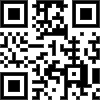WARM-UP EXERCISES AS A CRUCIAL FACTOR OF PREPARATION FOR PHYSICAL ACTIVITY: PHYSIOLOGICAL REASONING
DOI:
https://doi.org/10.30888/2663-5712.2024-25-00-055Keywords:
warm-up exercise, muscles chronaxie, acceleration of biopotentials formation, contractility of muscle, cardiorespiratory response, temperature responseAbstract
Physical activity can be challenging for the body, especially when performed suddenly and without proper preparation. To avoid the risk of injury and optimize a performance, athletes and trainers use warm-up exercises to prepare the body for activity. PrMetrics
References
Kilgore, J.L., Baker, J.S., Davies, B.A. (2014) Consideration of the paradigm of exercise physiology. Res Sports Med.; 22(3), 314-322. doi:10.1080/15438627.2014.915837.
Ruegsegger, G. N., & Booth, F. W. (2018). Health Benefits of Exercise. Cold Spring Harbor perspectives in medicine, 8(7), a029694. https://doi.org/10.1101/cshperspect.a029694.
Sanders, M. (2018). American College of Sports Medicine. ACSM's Health/Fitness Facilities Standards and Guidelines. Human Kinetics.
Powers, S.K., Howley, E.T. (2007). Exercise Physiology: Theory and Application to Fitness and Performance. McGraw-Hill.
McGowan, C. J., Pyne, D. B., Thompson, K. G., & Rattray, B. (2015). Warm-Up Strategies for Sport and Exercise: Mechanisms and Applications. Sports medicine (Auckland, N.Z.), 45(11), 1523–1546. https://doi.org/10.1007/s40279-015-0376-x.
Abad, C. C., Prado, M. L., Ugrinowitsch, C., Tricoli, V., & Barroso, R. (2011). Combination of general and specific warm-ups improves leg-press one repetition maximum compared with specific warm-up in trained individuals. Journal of strength and conditioning research, 25(8), 2242–2245. https://doi.org/10.1519/JSC.0b013e3181e8611b.
Silva, L. M., Neiva, H. P., Marques, M. C., Izquierdo, M., & Marinho, D. A. (2018). Effects of Warm-Up, Post-Warm-Up, and Re-Warm-Up Strategies on Explosive Efforts in Team Sports: A Systematic Review. Sports medicine (Auckland, N.Z.), 48(10), 2285–2299. https://doi.org/10.1007/s40279-018-0958-5.
Ribeiro, B., Pereira, A., Neves, P. P., Sousa, A. C., Ferraz, R., Marques, M. C., Marinho, D. A., & Neiva, H. P. (2020). The Role of Specific Warm-up during Bench Press and Squat Exercises: A Novel Approach. International journal of environmental research and public health, 17(18), 6882. https://doi.org/10.3390/ijerph17186882.
Zemtsova, I. I. (2019). Sportyvna fiziolohiya : navchalʹnyy posibnyk. [Sports physiology: study guide]. Olympic literature (in Ukrainian).
Andrade, D. C., Henriquez-Olguín, C., Beltrán, A. R., Ramírez, M. A., Labarca, C., Cornejo, M., Álvarez, C., & Ramírez-Campillo, R. (2015). Effects of general, specific and combined warm-up on explosive muscular performance. Biology of sport, 32(2), 123–128. https://doi.org/10.5604/20831862.1140426.
Yaremko, Ye. O. (2006). Sportyvna fiziolohiya [Sports physiology]. Spolom (in Ukrainian).
Geddes, L. A. (2004). Accuracy limitations of chronaxie values. IEEE transactions on bio-medical engineering, 51(1), 176–181. https://doi.org/10.1109/TBME.2003.820340.
Dayal, A., Schrötter, K., Pan, Y., Föhr, K., Melzer, W., & Grabner, M. (2017). The Ca2+ influx through the mammalian skeletal muscle dihydropyridine receptor is irrelevant for muscle performance. Nat Commun 8, 475. https://doi.org/10.1038/s41467-017-00629-x.
Shishmarev, D. (2020). Excitation-contraction coupling in skeletal muscle: recent progress and unanswered questions. Biophysical reviews, 12(1), 143–153. https://doi.org/10.1007/s12551-020-00610-x.
Palumbo, A., Vizza, P., Calabrese, B., Ielpo, N. (2021). Biopotential Signal Monitoring Systems in Rehabilitation: A Review. Sensors (Basel, Switzerland), 21(21), 7172. https://doi.org/10.3390/s21217172.
Chaabene, H., Behm, D. G., Negra, Y., & Granacher, U. (2019). Acute Effects of Static Stretching on Muscle Strength and Power: An Attempt to Clarify Previous Caveats. Frontiers in physiology, 10, 1468. https://doi.org/10.3389/fphys.2019.01468.
Ishii, Sh., Oyama, K., Kobirumaki-Shimozawa, F., Nakanishi, T., Nakahara, N., Suzuki, M., Ishiwata Sh., Fukuda, N. (2023). Myosin and tropomyosin–troponin complementarily regulate thermal activation of muscles. J Gen Physiol ; 155 (12): e202313414. doi: https://doi.org/10.1085/jgp.202313414.
Jeong, H. J., Kim, B. K., Yoo, G. S., & Kim, K. H. (2023). The effect of differences in warm-up and muscle contraction methods on muscle activity and total work during the bench press exercise in Republic of Korea: experimental research. Medical Lasers; Engineering, Basic Research, and Clinical Application, 12(2), 108-115.
Sze, S., Pan, D., Moss, A. J., Ong, C. K., Pareek, M., Squire, I. B., & Clark, A. L. (2022). Overstimulation of the ergoreflex-A possible mechanism to explain symptoms in long COVID. Frontiers in cardiovascular medicine, 9, 940832. https://doi.org/10.3389/fcvm.2022.940832.
Aimo, A., Saccaro, L.F., Borrelli, C., Fabiani, I., Gentile, F., Passino, C., Emdin, M., Piepoli, M.F., Coats, A.J.S. and Giannoni, A. (2021). The ergoreflex: how the skeletal muscle modulates ventilation and cardiovascular function in health and disease. Eur J Heart Fail, 23: 1458-1467. https://doi.org/10.1002/ejhf.2298.
Joyner, M. J., & Casey, D. P. (2015). Regulation of increased blood flow (hyperemia) to muscles during exercise: a hierarchy of competing physiological needs. Physiological reviews, 95(2), 549–601. https://doi.org/10.1152/physrev.00035.2013.
Park, H. K., Jung, M. K., Park, E., Lee, C. Y., Jee, Y. S., Eun, D., Cha, J. Y., & Yoo, J. (2018). The effect of warm-ups with stretching on the isokinetic moments of collegiate men. Journal of exercise rehabilitation, 14(1), 78–82. https://doi.org/10.12965/jer.1835210.605.
Racinais, S., Cocking, S., & Périard, J. D. (2017). Sports and environmental temperature: From warming-up to heating-up. Temperature (Austin, Tex.), 4(3), 227–257. https://doi.org/10.1080/23328940.2017.1356427.
Raccuglia, M., Lloyd, A., Filingeri, D., Faulkner, S. H., Hodder, S., & Havenith, G. (2016). Post-warm-up muscle temperature maintenance: blood flow contribution and external heating optimisation. European journal of applied physiology, 116(2), 395–404. https://doi.org/10.1007/s00421-015-3294-6.
Cirino, C., Marostegan, A. B., Hartz, C. S., Moreno, M. A., Gobatto, C. A., & Manchado-Gobatto, F. B. (2023). Effects of Inspiratory Muscle Warm-Up on Physical Exercise: A Systematic Review. Biology, 12(2), 333. https://doi.org/10.3390/biology12020333.
Lühker, O., Berger, M. M., Pohlmann, A., Hotz, L., Gruhlke, T., & Hochreiter, M. (2017). Changes in acid-base and ion balance during exercise in normoxia and normobaric hypoxia. European journal of applied physiology, 117(11), 2251–2261. https://doi.org/10.1007/s00421-017-3712-z.
Goldfarb, A.H. (2013). Exercise and Endogenous Opiates. In: Constantini, N., Hackney, A. (eds) Endocrinology of Physical Activity and Sport. Contemporary Endocrinology. Humana Press, Totowa, NJ. https://doi.org/10.1007/978-1-62703-314-5_2.
Liashevich, A. M., & Chernukha, I. S. (2019). Fiziolohichni osnovy fizychnoho vykhovannya ta sportu : navchalʹnyy posibnyk [Physiological foundations of physical education and sports: study guide]. State University named after I. Franko (in Ukrainian).
Downloads
Published
How to Cite
Issue
Section
License
Copyright (c) 2024 Authors

This work is licensed under a Creative Commons Attribution 4.0 International License.





